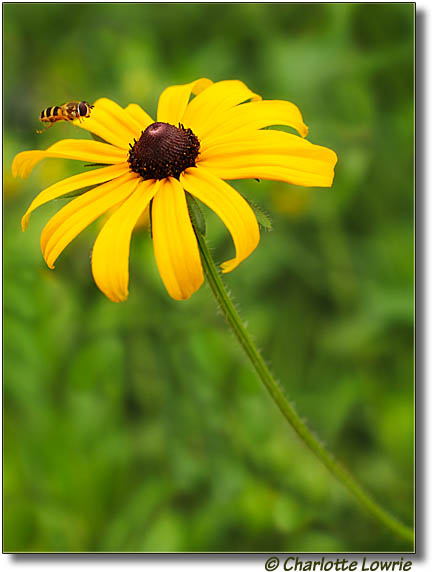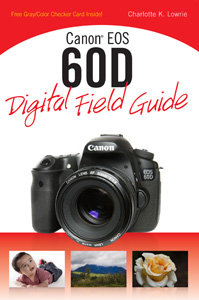By Charlotte Lowrie
If you have the new Canon EOS 60D digital SLR, then you know that the camera packs a lot of features in a relatively small package. It takes time to learn all that the camera offers, but the following tips will help you take advantage of some helpful features of the camera.
-
 Two things that can help you with your image workflow: adding your copyright information in the camera, and using the 60D's star rating system. Both of these things carry over from the camera to the computer when you upload images. So be sure to add your copyright using the Setup 3 menu. Just select copyright information and then add your name and copyright information. And you can rate images using the Playback 2 menu. The ratings you apply are then available to jump to image in the camera, and they are available on the computer when you use an editing program that uses the XMP standard such as Canon's Digital Photo Professional software included with the camera. Two things that can help you with your image workflow: adding your copyright information in the camera, and using the 60D's star rating system. Both of these things carry over from the camera to the computer when you upload images. So be sure to add your copyright using the Setup 3 menu. Just select copyright information and then add your name and copyright information. And you can rate images using the Playback 2 menu. The ratings you apply are then available to jump to image in the camera, and they are available on the computer when you use an editing program that uses the XMP standard such as Canon's Digital Photo Professional software included with the camera.
- If you use an external microphone while recording movies, and if you forget the microphone windshield, just enable the wind filter to cut down the rumbling noise of wind passing over the microphone. Just turn the Mode dial to Movie mode, then press the Menu button. On the Movie Shooting 2 menu, select Sound recording, press the Set button, and then select Enable for the Wind filter option.
- You may already know that digital noise degrades the overall quality of your images. With the 60D's Auto ISO option, the ISO can go very high in low light, and that will inevitably increase the incidence of digital noise. I recommend that you set a limit on the highest ISO sensitivity setting that's used with Auto ISO. I set the limit at ISO 800 on my 60D. There will be some noise at ISO 800, but it is manageable using a good noise reduction program during image editing or RAW image conversion. A side benefit using low ISO sensitivity settings is that more images will fit on the SD card because digital noise is detected as "detail" that cannot be compressed when storing images on the media card.
- If you're shooting movies, use the general rule of thumb of using a shutter speed that is twice the frame rate. This means that if you're shooting at 25 frames per second (fps), then the shutter speed should be 1/50th sec.
-
If you're not getting the full 58-image JPEG burst that the 60D can deliver in Continuous shooting drive mode, check the Custom Functions. Using custom Functions such as II-1, Long exposure noise reduction, and II-2, High ISO speed noise reduction will slow down the maximum burst rate to deliver fewer than the 58-image rate.
- If you want better and more consistent color for movies, then set a Custom White Balance or use one of the preset White Balance options instead of using Auto White Balance. If you change the ISO or aperture (f-stop) while shooting the movie, the white balance can change as well with Auto White Balance. It doesn't shift with a Custom or preset white balance option. This also makes editing your movie easier.

Also be sure to check out my book, the
Canon EOS 60D Digital Field Guide.
Related articles:
Related online courses:
|

